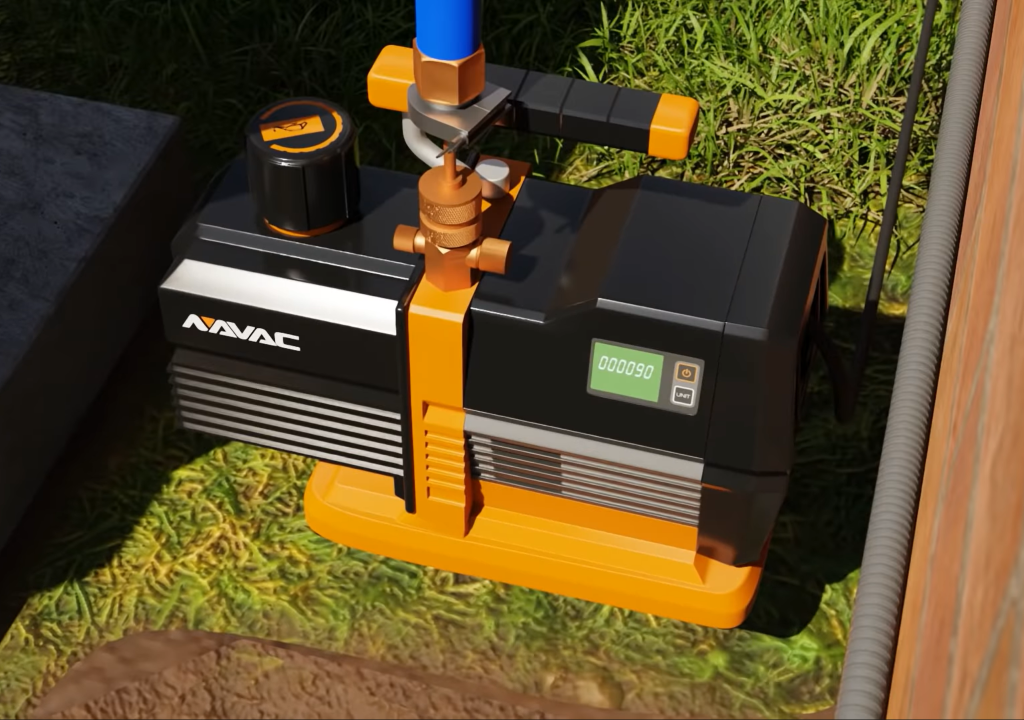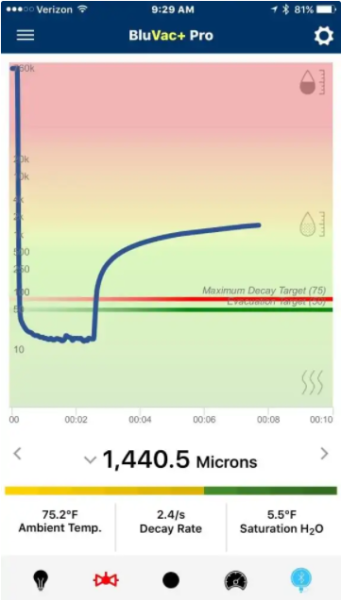Get Tech Tips
Subscribe to free tech tips.
Vacuum: Moisture vs. System Leak
This tech tip was written by Don Gillis with Chemours. Thanks, Don!
Evacuation helps remove contaminants, like moisture and non-condensable gases, from HVAC/R systems, especially ones that are put into service for the first time or put back into service after a repair. Even though pulling a deep vacuum has always been a best practice, it will be required for systems that use the new A2L refrigerants.

Before a system is ready to be charged with refrigerant, we must pull a deep vacuum on it to do a decay test. The rate at which our vacuum decays lets us know if our system is dry and tight enough to operate normally. Everything leaks a little, but the decay test sets a threshold that we don’t want to exceed. If our vacuum decays beyond that target, that means we have some problems we need to address.
If the leak rate has still not decreased, then one of two things may be happening:
1. The system is still contaminated with moisture. (Possibly trapped under the compressor oil.)
If the system indicates moisture, a multiple evacuation with a nitrogen sweep will significantly reduce the amount of moisture in the system.

Here is a step-by-step guide to the nitrogen sweep procedure:
- Reduce the system pressure to between 1000 and 2500 microns.
- Isolate the vacuum pump with the core tools and disconnect the vacuum hose from the low side of the system.
- Break the system vacuum with nitrogen introduced at the side port of the core tool.
- Break the vacuum with nitrogen to get it to the equivalent of atmospheric pressure (760,000 microns).
- Purge nitrogen through the system at 1–3 PSIG from the high to the low side, letting it vent out the open port of the core tool.
Do not pressurize the system. Typically, no more than a triple evacuation with a nitrogen sweep will be required.
2. The system has a small leak that was not detected by the initial pressure test. (Some leaks are more apparent under vacuum than pressure.)
While the micron gauge is quite capable of picking up leaks, testing for a leak in a vacuum is not acceptable practice over a standing pressure test, as moisture is drawn into the system during the evacuation process. If you find you have a leak under vacuum, break the vacuum with dry nitrogen and try to find it under pressure.
DO NOT open the system to atmosphere under a vacuum! Doing so undermines all your time and effort to this point.
If the system has a leak, the vacuum gauge will continue to rise until atmospheric pressure has been reached. However, if the system is vacuum-tight but still contains moisture, the rise will level off when the vapor pressure equalizes in the system, typically between 20,000 and 25,000 microns between 72° and 80°F. At that point, that vacuum reading will become stable.
Note: a system that continues to level off at 3500–4500 microns may have turned system moisture to ice. Should this occur, the system temperature may have to be raised by an external heat source to get the moisture out of the system.)
Conclusion
The two main causes of a failed decay test are moisture contamination and system leaks, both with different fixes. They’ll also look a bit different if you’re using an app to keep track of your vacuum. (Wet systems level off above the decay threshold; leaky systems tend to have straight lines going well above that target.)
Leaky systems that manage to get past the nitrogen pressure test will need to be addressed just like any other leak you’d find in the pressure test. Again, we don’t use a deep vacuum for leak testing because the vacuum pump draws moisture into the system through the leaks when it creates a pressure differential. But a deep vacuum can show you that you have a leaky system, and it needs to be taken care of just like any other system leak found with bubbles or a nitrogen pressure test.
—Don Gillis











Comments
To leave a comment, you need to log in.
Log In